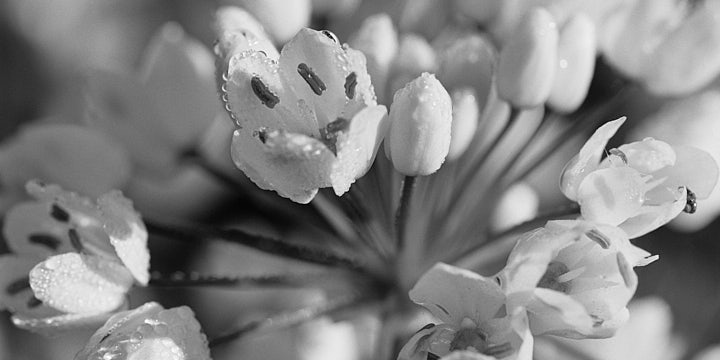Wildflowers in Andalucia
Andalucia, a region in southern Spain, is known for its abundance of wildflowers, especially in spring. The diverse landscape, ranging from mountains to coastal areas, provides a rich environment for a wide variety of plant species to thrive. During the spring months, fields. meadows, olive groves, and even the road verges burst into bloom with colourful flowers such as poppies, lavender, wild orchids, and many more. The mild climate and ample sunshine contribute to the flourishing of wildflowers, making springtime a particularly beautiful time of year in Andalucia for nature lovers and photographers. However, it can be over quickly due to soaring temperatures and lack of rain.
Last year, wildflowers were particularly poor due to drought. This year, we had rain, so I started planning as soon as the flowers started to appear. The wild garlic was particularly prolific and beautiful, so I decided to concentrate on that. I decided to shoot early in the morning when the sun would be low and soft (the sun is very bright and harsh later in the day) and was lucky that there was a heavy dew, which I thought would add a sparkle to the photos.
Film photo details
I took all the photos on this page (excluding the out-takes, see below) using a tripod-mounted Mamiya M645 1000S camera paired with a Mamiya Macro A 1:4 120mm lens. I used Ilford FP4 film, which I developed in Rodinal, 1+50, for 14 minutes @20C.
The photos were digitised using a Nikon Z6 mirrorless digital camera with a Tokina AT-X Pro Macro 100mm f2.8 D lens and processed using Capture One software.
The photos
First, the photos of the flowering wild garlic:
Click on any photo to see a larger version.

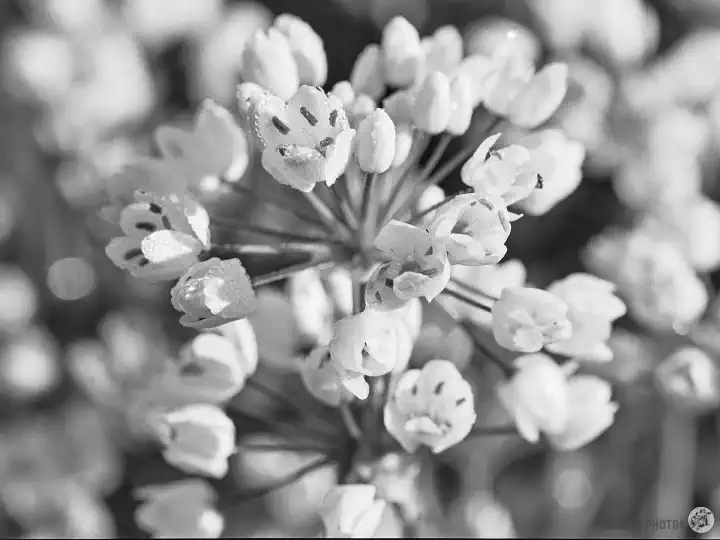
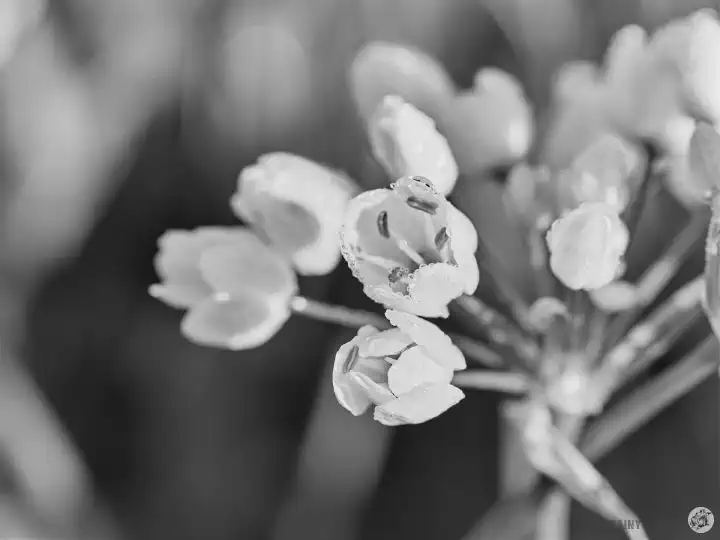
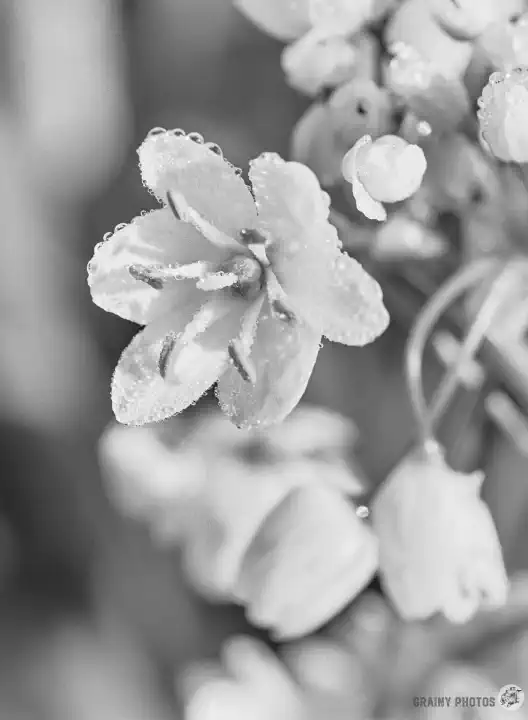

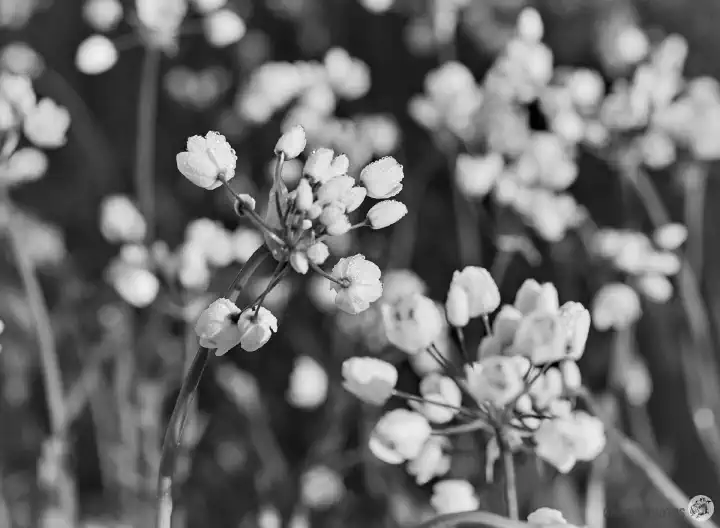
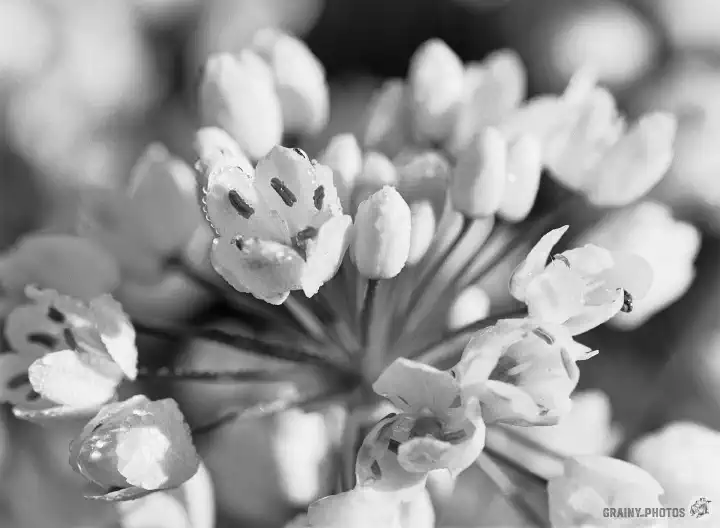
I also took a few photos of some other wildflowers growing nearby:
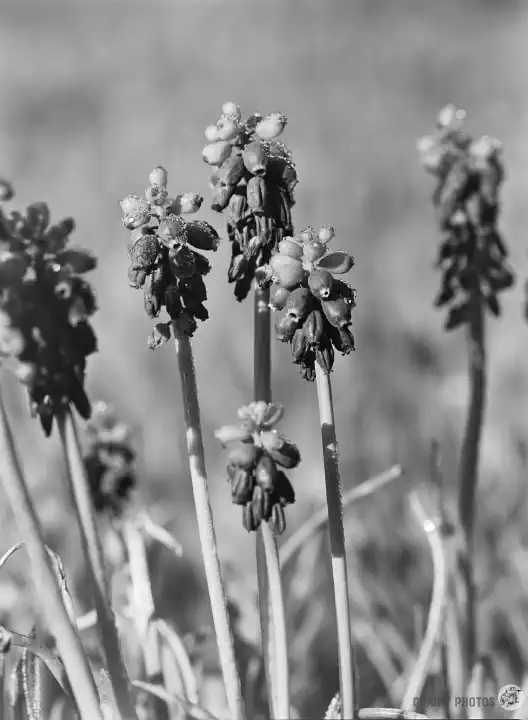


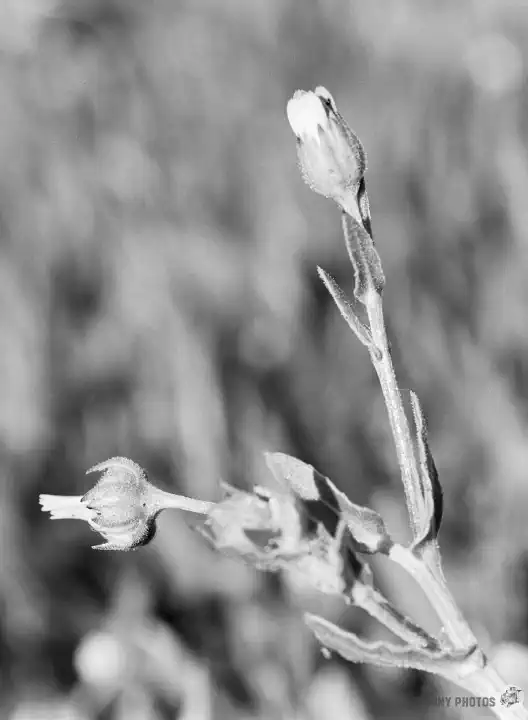
The out-takes
It was not quite plain sailing. What I described above was the second attempt. The day before, things went horribly wrong. I used Fomapan 200 film in my Mamiya M645 1000S camera. I developed the film in Rodinal, 1+50, for 9 minutes @20C.
The photos were digitised as normal using a Nikon Z6 mirrorless digital camera with a Tokina AT-X Pro Macro 100mm f2.8 D lens and processed using Capture One software.
Black streaks on Fomapan 200 film
Everything seemed to be going well until I saw the developed negatives. Every shot was ruined by what I can only describe as ‘black rain’ (white streaks on the negative, black on the positives).
On the way to the photo location, I passed a beautifully misty lake, which seemed to glow in the rising sun. I stopped to take this photo: Misty morning by the lake.
Note the black streaks, or black rain (click the photos for a larger version - the ‘black rain’ is much more visible):
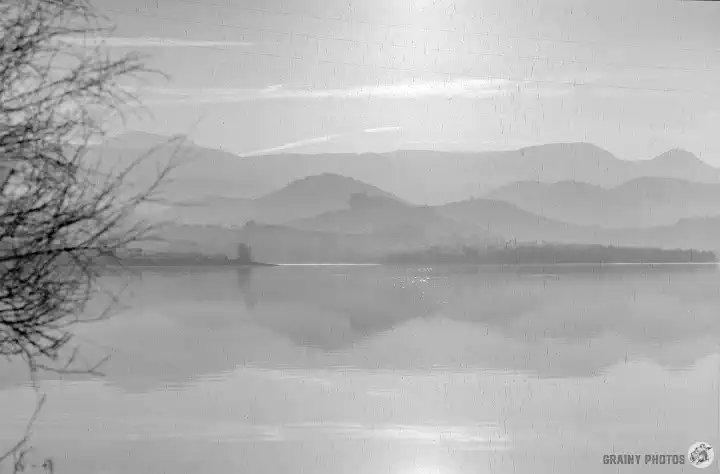
And all the wild garlic flower photos were similarly affected:
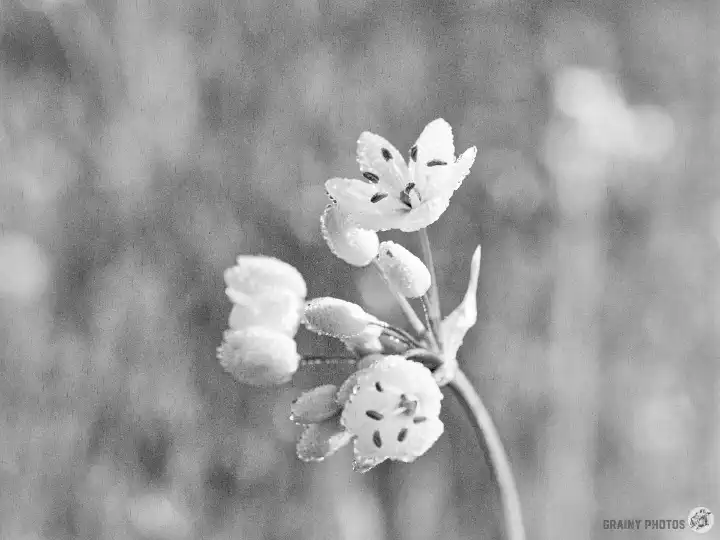
The Fomapan 200 film was in date and had been stored in a fridge, the same as all my other film. In my opinion, the film was defective. I had problems in the past with Foma 120 film where the print on the backing paper was visible on the negatives, but never anything like this. I sent four emails to Foma (at two different email addresses). Eventually, after several weeks (I had given up hope of hearing from Foma by this time), I received the following reply (reproduced here word for word, with no edits):
Your showed kind of the defect is caused by interaction our very sensitive emulsion of FOMAPAN 200 with the mechanics of particular camera. Now we advise users to make tests with their camera first before other using this film. The sensitive emulsion of FOMAPAN 200 - 120 is not compatible with some cameras as specified in our technical sheet in the attachment. Sometimes helps also polishing metal parts of the camera which are in contact with the film.
Not the clearest explanation, but on their spec. sheet, they say:
FOMAPAN 200 Creative emulsion contains T-crystals providing high resolution and very low granularity of the film. Relating to this it may emerge its higher sensitivity to mechanical strain mainly during movement of the rollfilm throughout some middle- format cameras. That may result in occurrence of desensitization records on developed negative. Within first usage of FOMAPAN 200 Creative type 120 it is recommended to test its compatibility with the particular camera.
If I understand correctly, Foma 200 film is not suitable for use in some middle-format cameras. The film path can stress the film and cause the problem I experienced. So, by implication, if I use the remaining roll of Fomapan 200 that I have in a different camera, it might be fine. I’m not sure I want to take the time and effort to put that to the test!
Foma products are competitively priced but can work out very expensive if they are defective and unreliable. Wasted film, wasted chemistry, and wasted time… Above all, no usable photos. I think I will be avoiding Foma 200 film in the forseeable future.
–
Film roll No’s 381 and 382.
See more posts about Flowers.